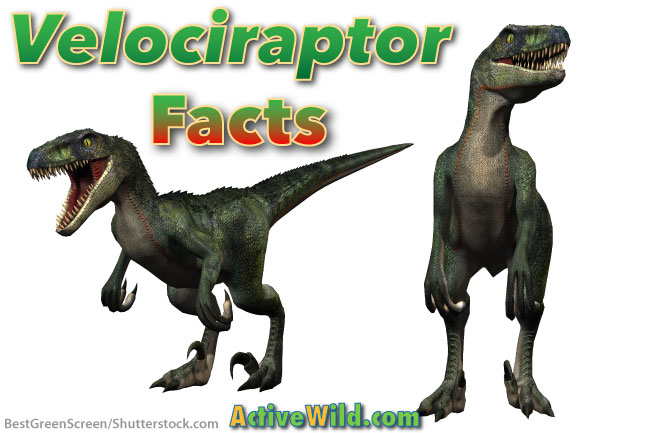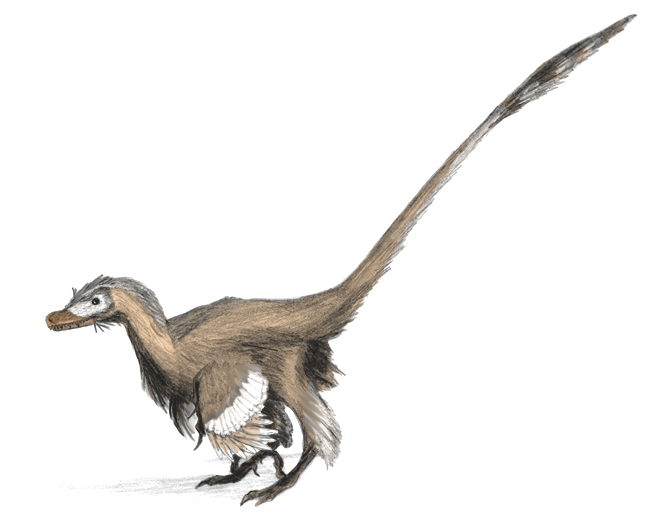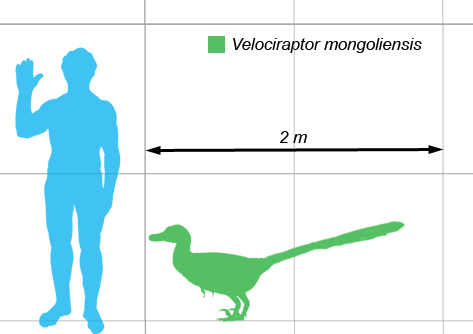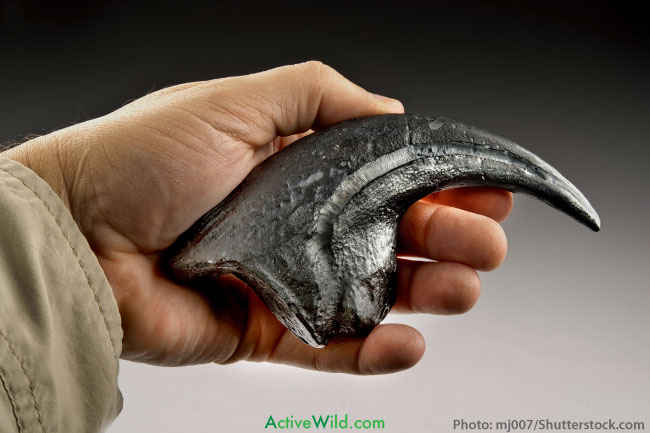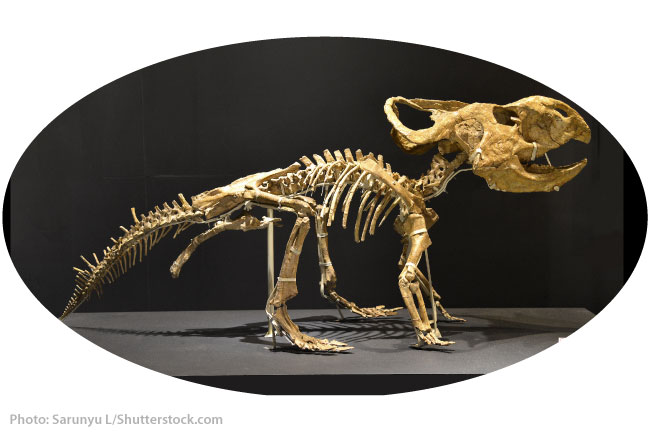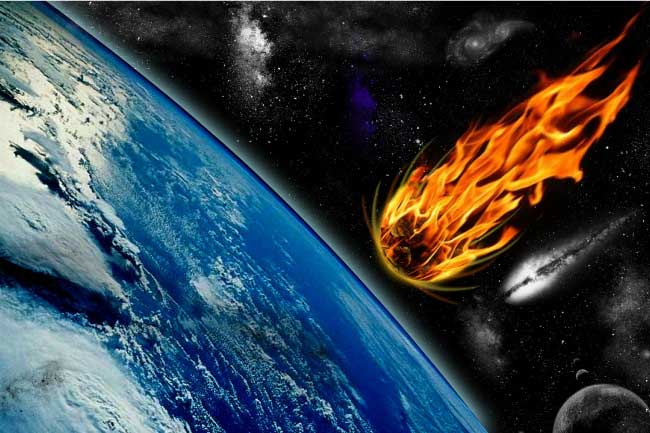The velociraptor was a fast-moving and dangerous predator of the Cretaceous Period. It’s one of the best-known dinosaurs, having been made famous by the Jurassic Park films. But just how realistic was the silver-screen portrayal of this small but deadly dinosaur? In this article, entitled Velociraptor Facts for Kids, Students & Adults, we’ll find out …
Velociraptor Facts for Kids, Students … and Adults
- This page is part of our Dinosaur Facts series.
You’ve no doubt heard of the velociraptor – it’s one of the ‘stars’ of the Jurassic Park films. However, the velociraptors in the movie don't actually present a very accurate portrayal of the dinosaur in real life.
You can watch the clip below to see the Velociraptors in Jurassic Park 3. (Warning: it's a bit scary!)
Although it was undoubtedly dangerous, the real velociraptor was far smaller than those seen in the films. Not only that; its appearance is likely to have been quite different. For a start, velociraptor may even have had feathers!
What Did Velociraptor Really Look Like?
The artist's impression below probably gives us a better idea of what Velociraptor really looked like:
Velociraptor Facts: How Big Was Velociraptor?
In real life, Velociraptor was no bigger than a large turkey. It grew up to 6.8ft (2 meters) in length and up to 1.6ft (0.5 meters) in height. It was likely to have weighed around 33lb (15kg).
Velociraptor's skull was large for its size, and had a long, elongated snout. Rows of between 52 and 56 serrated teeth lined both the upper and lower jaw: ideal for tearing the flesh from prey.
Powerful back legs led to an inflexible, fused tail that provided balance as the velociraptor hunted. This would have been essential, as velociraptor could reach speeds of 40mph (60kph) when giving chase.
Despite its small size, the Velociraptor wasn't a dinosaur you’d ever want to meet in the flesh. And while its teeth were dangerous enough, it's deadliest weapons were on its feet ...
Velociraptor Claws
Velociraptor had four claws on each foot. The first claw on each foot was small, and positioned away from the main foot. The second claw – the innermost of the three main claws – was the key adaptation that enabled Velociraptor to become such an effective hunter. It was an enlarged, sickle-shaped, razor-sharp weapon.
With flexible ankle joints, Velociraptor could reach forward and grab its prey with this claw, in much the same way as a modern bird of prey uses its talons.
Once it had pinned its prey down, Velociraptor could start eating. Again, like many birds of prey, it may have started to eat while its prey was still alive!
Velociraptor’s deadly claw could be retracted out of the way when not in use. The other two main toes on each foot supported the dinosaur’s weight.
Velociraptor Facts for Kids: Did Velociraptor Have Feathers?
Over the years the link between dinosaurs and modern-day birds has become more and more apparent. There is now evidence that Velociraptor may have possessed feathers.
A specimen unearthed in Mongolia in 2007 appeared to have quill knobs; points in which prominent feathers such as flight feathers are attached.
Because Velociraptor’s arms are too short for it to have been able to fly or glide, this may have been a retained feature left over from Velociraptor’s own ancestors.
Yes, you read that right: ancestors of velociraptor may have been able to fly! However, like the modern day ostrich, over many thousands of years velociraptor had lost this ability.
Velociraptor’s feathers may instead have had either a behavioural purpose – for instance to attract mates, or a functional purpose, such as to retain warmth or incubate eggs.
Who Named Velociraptor?
Velociraptor was originally named by the then president of the American Museum of Natural History; Henry Fairfield Osborn.
Osborn combined two Latin words, ‘velox’ meaning swift and ‘raptor’ meaning robber or plunderer to name the Velociraptor species.
When Was Velociraptor Alive?
Velociraptors were one of the very last dinosaur species to live on Earth. They lived at the end of the Cretaceous period, 85.8 to 70.6 million years ago.
Where Did Velociraptor Live?
Velociraptors lived in hot, desert-like regions. Fossil remains have been found in Mongolia, China, and Russia.
Velociraptor Family Tree
The Velociraptor belongs to the Dromaeosauridae family, which includes a number of other small, birdlike dinosaur species.
There are actually two different species of Velociraptor, Velociraptor osmolskae and Velociraptor mongoliensis.
Velociraptor Diet
Velociraptor was a carnivore. It was likely to have used a combination of hunting and scavenging, being opportunistic to whatever it could find or catch.
It would have probably eaten a variety of small reptiles, insects, amphibians, and mammals. Small and nimble, its speed would have been an advantage.
There is fossil evidence that Velociraptor attacked the much larger herbivore, Protoceratops. Protoceratops was a sheep-sized ancestor of the much larger Triceratops.
A Velociraptor fossil was found interlocked with that of a Protoceratops. The two were clearly fighting. However, it is impossible to say if this was a regular occurrence or an isolated incident involving an exceptionally brave Velociraptor!
An Intelligent Dinosaur
Compared to other dinosaurs, Velociraptor had a large brain for its size. This hints at a superior intelligence, and Velociraptor may have been able to use cunning when hunting for prey.
It takes intelligence to hunt in packs, and there is evidence that Velociraptor moved together, which could indicate group hunting. This would allow velociraptor to take down larger prey.
However, velociraptor may simply have come together to mate and raise young. Behaviour is one of the hardest things to determine when looking at fossil records, and there is much speculation involved.
When Did Velociraptor Go Extinct?
Velociraptor was wiped out at the end of the Cretaceous Period along with all of the other (non-avian) dinosaurs. Known as the K-T Extinction Event, this mass extinction was believed to have been caused by an asteroid strike.
Over 75% of all Earth’s species became extinct during this time.
Did Velociraptor Communicate With Each Another?
Although the Jurassic Park movies had a variety of vocal noises for their velociraptors, again it is unclear what they would have sounded like in real-life. Instead, the film’s producers used a variety of animal noises including a horse, pigs, and even a pair of mating tortoises!
Top Ten Velociraptor facts For Kids
- Velociraptor lived in the Late Cretaceous, at the very end of the age of the dinosaurs.
- The name ‘Velociraptor’ comes from the Latin words ‘Velox’, meaning swift and ‘Raptor’, meaning robber or plunderer
- Two species of Velociraptor have been identified; Velociraptor osmolskae and Velociraptor mongoliensis.
- No bigger than a turkey, Velociraptor only reached 0.5m (1.6ft) in height
- Despite its small size, Velociraptor could reach speeds of 40mph (60kph)
- A large, sickle-shaped claw on each foot would help Velociraptor grab and hold onto prey
- Rows of serrated teeth allowed Velociraptor to tear at the flesh of its prey.
- Velociraptor may have had feathers. These could have been for mating displays, warmth, or egg incubation.
- As a carnivore, Velociraptor would have used a combination of hunting and scavenging to find food.
- Velociraptor had a relatively large brain for its size. It was likely to have been intelligent and may have used cunning to stalk its prey.
- Velociraptor went extinct during the Cretaceous–Paleogene Extinction Event, together with 75% of the Earth’s species.
Velociraptor facts For Kids, Students & Adults: Conclusion
The velociraptor was a small, bird-like dinosaur. With a large brain for its size, it was likely to have been more intelligent than most other dinosaurs, capable even of pack hunting.
Velociraptor lived in the Late Cretaceous epoch of the Cretaceous Period. It lived right up to the Cretaceous–Paleogene Extinction Event, which wiped out over 75% of the Earth’s species.
We hope that you have enjoyed these Velociraptor facts. You can find out more about dinosaurs on these related pages:
- Visit our main dinosaur page and become a dinosaur expert: Dinosaur Facts
- If you thought Velociraptor was scary, you probably shouldn’t visit this page: Tyranosaurus Rex Facts
- Find out about the Triassic, Jurassic and Cretaceous Periods: Dinosaur Periods

